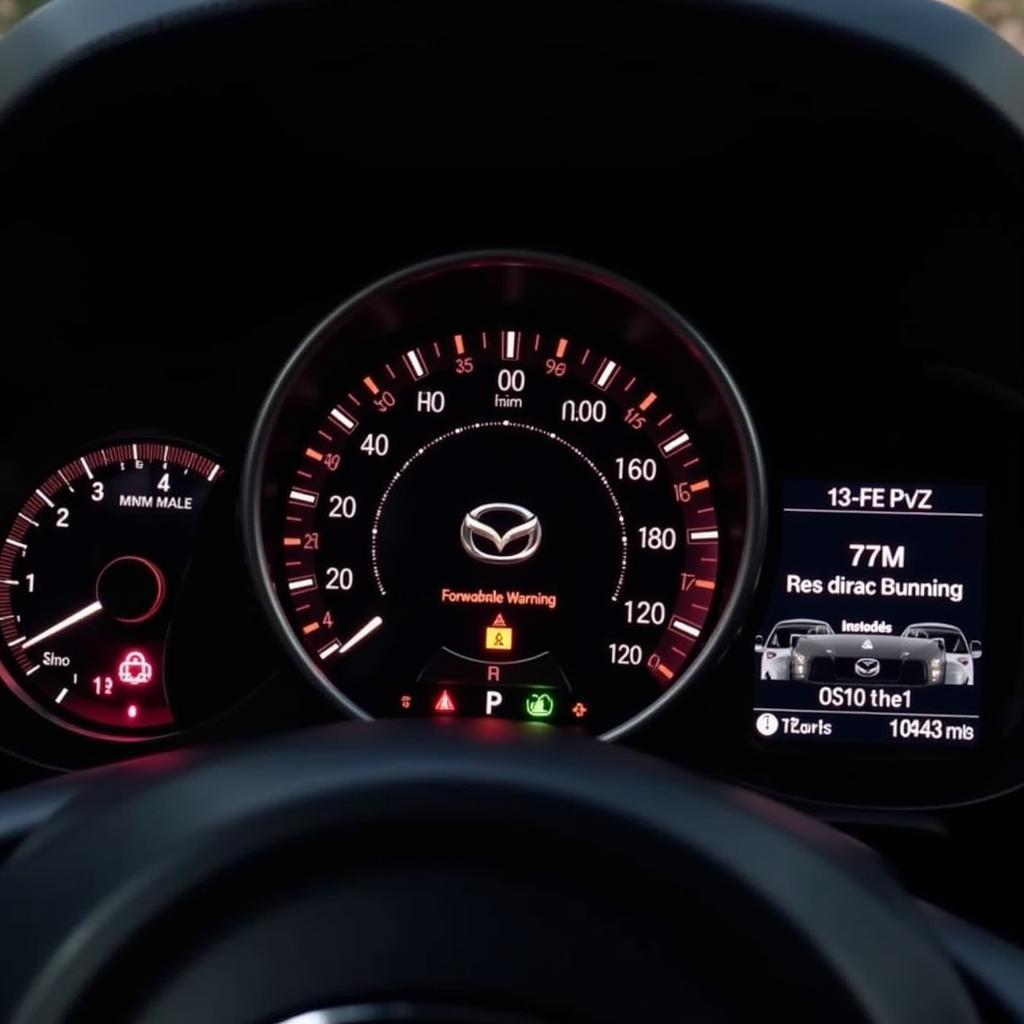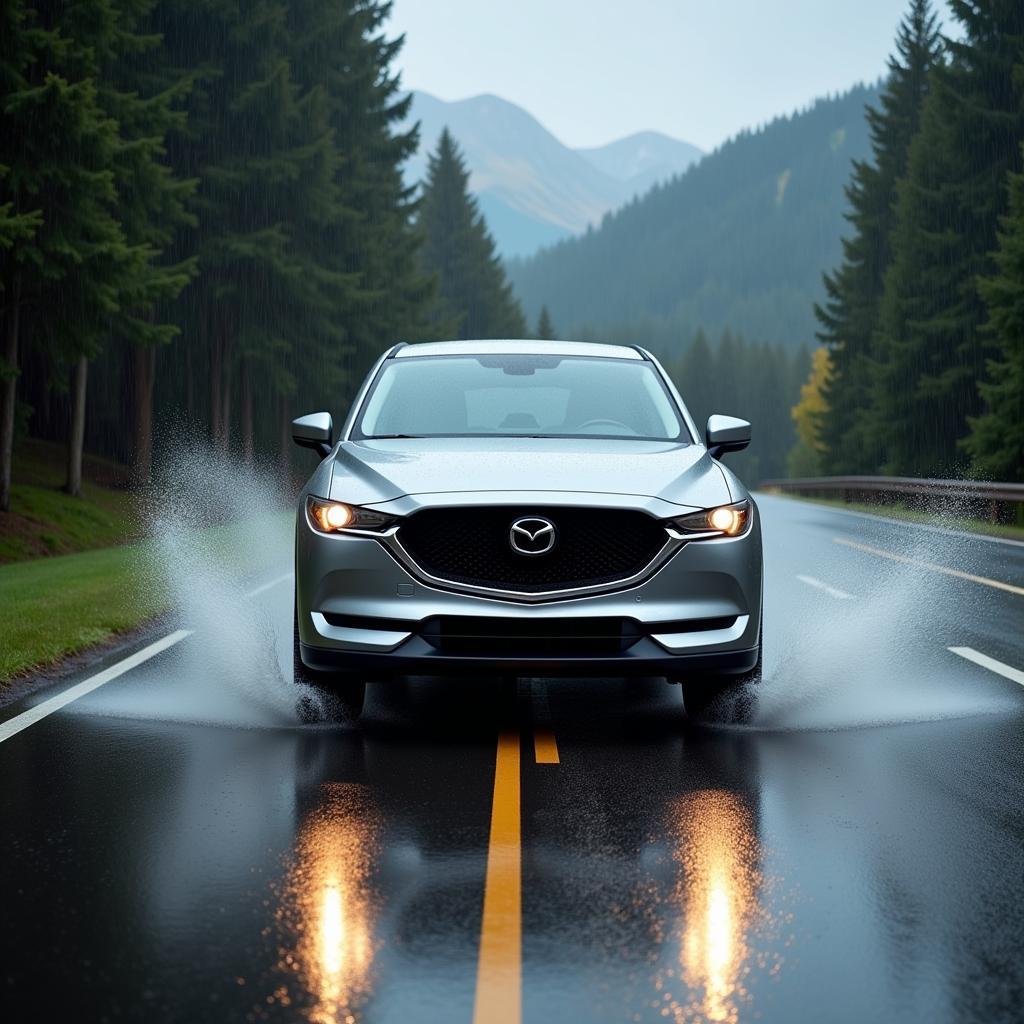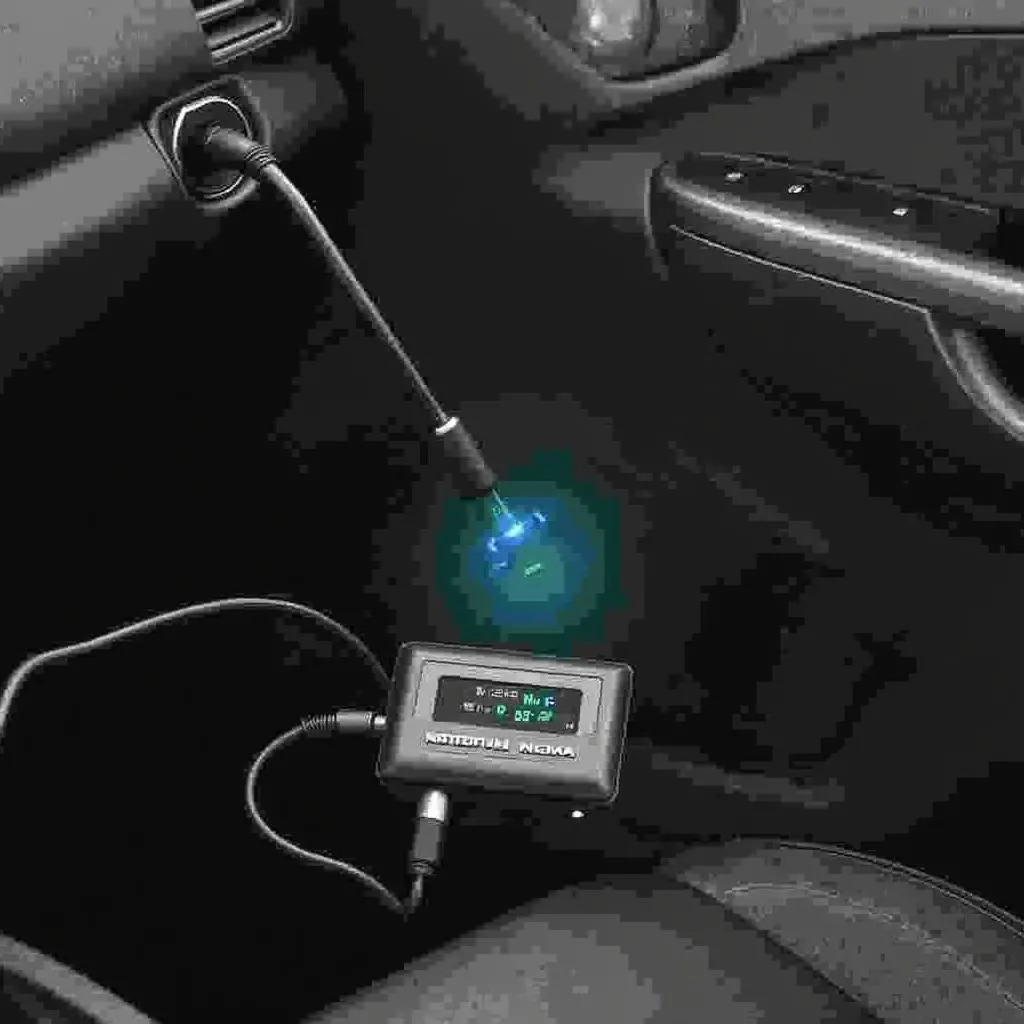If you’re driving a Mazda CX-5 and see a “Forward Brake Warning” or “Adverse Condition Warning” message on your dashboard, it can be a little unnerving. These warnings are part of the vehicle’s advanced safety suite, designed to prevent collisions and keep you safe on the road. However, they can sometimes be triggered in unexpected situations, leading to confusion. This article aims to demystify these warning systems, explaining what triggers them and how to respond to ensure your safety and a smoother driving experience.
 Mazda CX-5 Dashboard with Warning Lights
Mazda CX-5 Dashboard with Warning Lights
What Triggers a “Forward Brake Warning” in a Mazda CX-5?
The “Forward Brake Warning” in your Mazda CX-5 is a component of the Mazda Radar Cruise Control and Smart Brake Support system (MRCC/SBS). It utilizes a front-facing radar sensor to monitor the distance and closing speed to the vehicle ahead. When the system detects a potential for a collision, it issues a visual warning on the dashboard and may even pre-charge the brakes for quicker response.
Here are some common scenarios that can trigger the “Forward Brake Warning”:
- Rapidly approaching a slower vehicle: If you’re closing in on the vehicle in front of you too quickly, the system will interpret this as a potential collision risk.
- The vehicle in front suddenly brakes: In situations where the lead vehicle brakes unexpectedly, your CX-5 will activate the warning to prompt an immediate driver response.
- Obstructions in the roadway: The radar system might detect stationary objects in your path, such as a fallen tree limb or debris, and issue a warning.
Understanding the “Adverse Condition Warning”
The “Adverse Condition Warning” is a bit different. It’s part of your CX-5’s i-ACTIVSENSE safety technology and is designed to anticipate potentially hazardous driving conditions. This system analyzes various factors, including:
- Weather conditions: Heavy rain, fog, or snow can significantly reduce visibility and increase stopping distances.
- Road conditions: Slippery surfaces like ice, wet pavement, or loose gravel can impact your vehicle’s handling.
- Light conditions: The system factors in low-light conditions or glare that might affect your visibility.
When the “Adverse Condition Warning” activates, it’s a signal to exercise extra caution. Adjust your driving accordingly by reducing speed, increasing following distance, and being prepared for sudden changes in road conditions.
 Mazda CX-5 Driving in Rainy Conditions
Mazda CX-5 Driving in Rainy Conditions
What to Do When You Get These Warnings
- Don’t panic: The first and most important thing is to stay calm. These warnings are designed to give you time to react.
- Assess the situation: Quickly check your surroundings, including the distance to the car in front, the presence of pedestrians, and the overall road conditions.
- Take appropriate action: This might involve braking firmly, reducing your speed, or adjusting your steering to avoid a collision.
- Be prepared for the system to activate: Remember, these systems are designed to intervene if they sense you’re not reacting quickly enough. Be ready for automatic braking or other safety measures to engage.
Can These Warnings Malfunction?
While the “Forward Brake Warning” and “Adverse Condition Warning” are generally reliable, like any technology, they can occasionally experience glitches or false positives. Here’s what might cause this:
- Sensor obstructions: Dirt, debris, snow, or ice buildup on the front sensors can interfere with their operation.
- Extreme weather: While designed for adverse weather, extremely heavy rain or snow might affect sensor accuracy.
- Software glitches: Like all computer systems, there’s a slight possibility of software malfunctions.
Expert Insight
“It’s important to remember that these safety systems are supplemental. They’re not a replacement for attentive driving.” – Mark Stevenson, Senior Automotive Diagnostic Technician
Troubleshooting Tips
If you experience recurring false warnings or suspect a malfunction:
- Check your sensors: Make sure the front sensors are clean and free from obstructions.
- Consult your owner’s manual: Refer to your CX-5 owner’s manual for specific information on the warning systems and troubleshooting steps.
- Schedule a service appointment: If the issue persists, it’s best to take your CX-5 to a qualified Mazda technician to diagnose and resolve the problem.
Driving with Confidence
Understanding the “Forward Brake Warning” and “Adverse Condition Warning” in your Mazda CX-5 empowers you to drive with greater confidence. These systems are valuable tools for enhancing safety, but they should never replace attentive driving and responsible vehicle maintenance.

